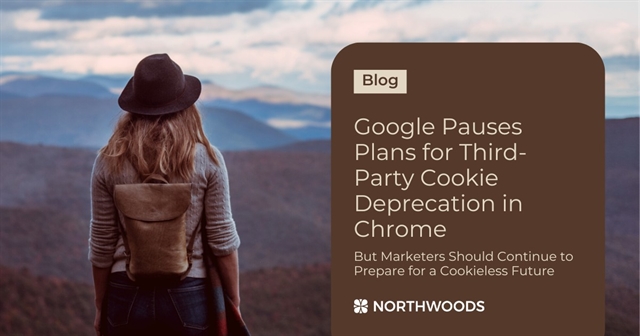By Edward Kozlowski
September 26, 2022
4 Minute Read
Google offers several different types of ads, so how do you know which type to run? That choice generally tracks with your chosen Google Campaign type. And that, in turn, aligns with your company's goals and your customers.
It’s important to note that Campaigns and Ads are two different things within Google Ads. You structure your account within Google Ads by developing different Campaigns. Each Campaign contains Ad Groups (Ad Groups contain keywords), and these Ad Groups contain their own Ads.
Different Types of Google Ads
- Responsive Search Ads are text ads that you see in Google search results.
- Display Ads contain images, videos or text. They display across Google’s network.
- Video Ads appear on YouTube.
- Shopping Ads are the product listings that appear on Google search results.
Google Responsive Search Ads
Responsive ads allow you to place up to 15 headlines and four descriptions in your ad. When Google serves your ad, it displays a combination of three headlines and two descriptions. Over time, Google will learn the most effective combinations and serve them.
On the flip side, Responsive ads reveal which headlines and descriptions fail to produce. You can replace them with new ad language. You can also “pin” specific messages, to make sure those messages display within the ad. “Pinning” tells Google that it must use the specified headlines.
Older text ad formats, such as expanded text, are no longer available for new ads, but you can still use previously created ones.
Google Dynamic Search Ads
Dynamic search ads use your website content to target keywords and create ads based on search terms users enter. These ads are great for reaching customer searches that you’re missing. Experts estimate that 15% of Google searches are unique. Dynamic ads help you capture those searches in your niche and reveal keywords you missed in your keyword research.
Google generates ad language dynamically, based on the search query and your website content. Note that effective use of dynamic search ads requires a website that is very well optimized for SEO. Optimization gives Google the content it needs to target queries and allow your ads to serve relevant content.
Google Display Ads
Display ads not only raise brand awareness, they can also retarget past visitors to your website. Similar types of ads can serve both purposes. Use either Display Campaigns or Performance Max Campaigns to target the Google display network. The difference: Display campaigns target only the display network; Performance Max campaigns target all Google channels.
New display ads you create must be responsive, but you can still use grandfathered non-responsive display ads. Responsive display ads use the same concept as responsive search ads: You feed the ad images, headlines, logos, videos, and descriptions. Google then generates an ad based on your content to fit the channel where the ad is served. The more content you feed the ad, the more it can learn and serve the highest quality ad to your customer.
Google Shopping Ads
Shopping ads are based on your products and serve a product listing within Google. These are great for e-commerce sites, because they get your product onto Google. To build these ads, build a Data Feed with your website’s product information and upload it into the Google Merchant Center.
Google uses the Google Merchant Center product information (based on your feed) to target potential customers. No keywords are involved, so make sure your data feed includes keyword descriptions and titles. Google serves the product ad based on the data feed, the search query and ad performance.
You can run shopping ads from a Shopping campaign or a Performance Max campaign.
Google Video Ads
YouTube must host your video ad. Google can serve it on YouTube and any video-capable site in the Google display network.
Google offers several types of video ad formats. Note that some of types charge fees only after certain events, so they can be cost-effective
- Skippable in-stream ads play before, during, or after other videos. Viewers can skip these ads after five seconds.
- Non-skippable in-stream ads are 15 seconds or less. They play before, during, or after other videos. Viewers can’t skip them.
- In-feed video ads show a text and a thumbnail image over running videos. They jump to full screen and play when viewers click on them.
- Bumper ads run for six seconds maximum. They play before, during, or after another video and aren’t skippable.
- Outstream ads start playing silently. Viewers can opt to turn on the sound.
- Masthead ads autoplay on mute for up to 30 seconds above a main video. The viewer can click the video to hear the sound. When the Autoplay concludes, these videos default to the video thumbnail.
Google offers different advertising options with different types of ads based on the type of Google ad campaigns you decide to run. It’s up to you to figure out which type of campaign suits your business, but this overview should help!
If you need assistance with digital advertising, Northwoods’ experts can design a digital advertising strategy specific to your company, as well as execute, monitor, and optimize your ads for success. Contact us to get started!
Related Blog Posts

A cookieless future is likely still coming. Here are strategies to get your hand out of the cookie jar and make a successful transition to a profitable future!

A strong backlink profile contributes significantly to your website's success. Here's what you need to know about backlinks, why quality backlinks matter, and how to measure and improve them for greater SEO success.

Both ad copywriting and website content writing complement each other as essential elements of digital marketing. Here's why they're both important and how they differ.